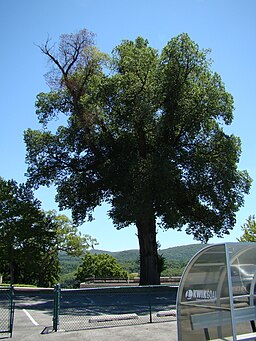The English Elm (Ulmus minor) was one of the iconic trees of the British countryside until, over the last one hundred years, repeated epidemics of Dutch Elm disease (often shortened to DED) killed over sixty million British Elms. Dutch Elms disease has not been eradicated and still effects elms in the British countryside today.
Dutch Elms Disease is an infection of the fungus Ophiostoma novo-ulmi, although the earlier 1920's epidemic was caused by the related Ophiostoma ulmi. The fungus causes blockages in the trees water transport system which leads to the symptoms visible above, the wilting of leaves and death of twigs and branches and eventually spreads to the root system of the tree as well. This death of twigs and branches is known as 'flagging' and 'shepherds crooks' can also be observed where the tips of the dying twigs start to turn down. A good resource for recognising these and other symptoms of Dutch elms disease can be found here.
Dutch elms disease is spread by beetles of the genus Scolytus, or elm bark beetles,which pupate in the bark of elms, the beetles seem to prefer taller trees and require a minimum thickness of bark to breed and feed. As such younger elms can survive for a while without becoming infected as their bark is too thin to house the beetle.
 |
| The Larger European Elm Beetle Scolytus scolytus |
 |
| Beetle feeding galleries Ronnie Nijboer [CC0], via Wikimedia Commons |
The original piece of legislation, the Plant Health; The Dutch Elm Disease (Local Authorities) Order 1984 is available here.
How might this effect your bushcrafting if you're making string or containers from elm bark?





No comments:
Post a Comment
Note: only a member of this blog may post a comment.